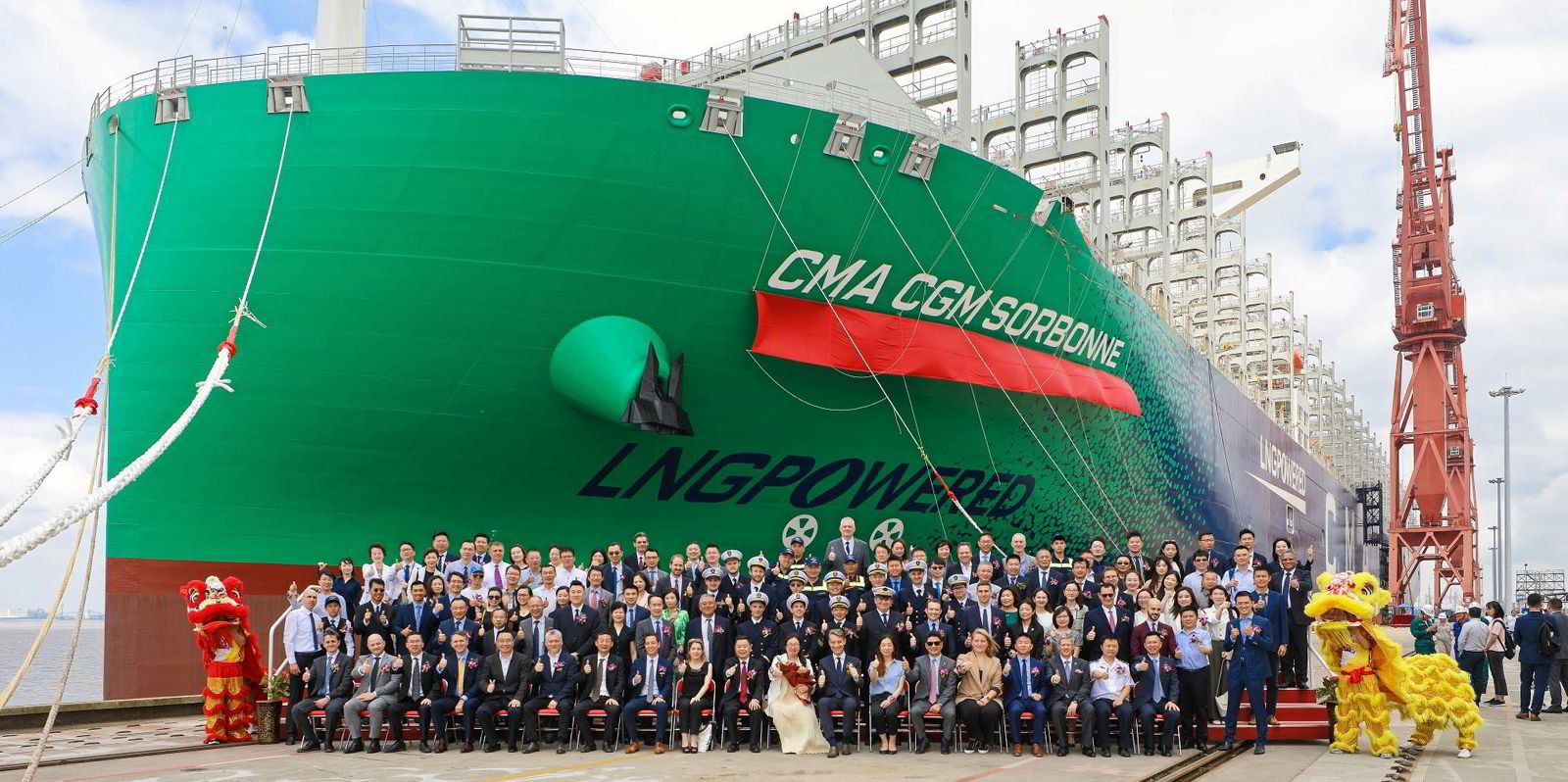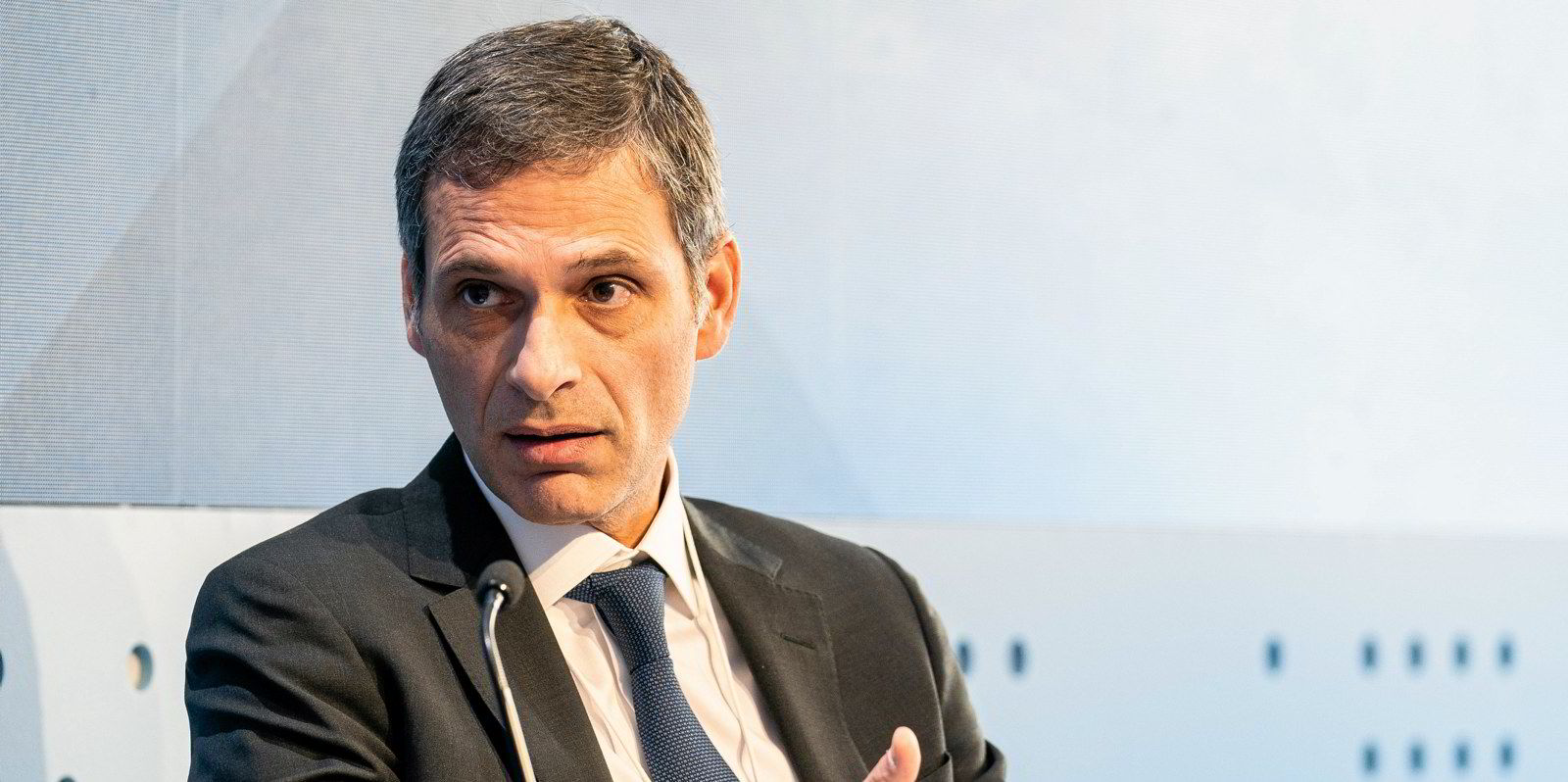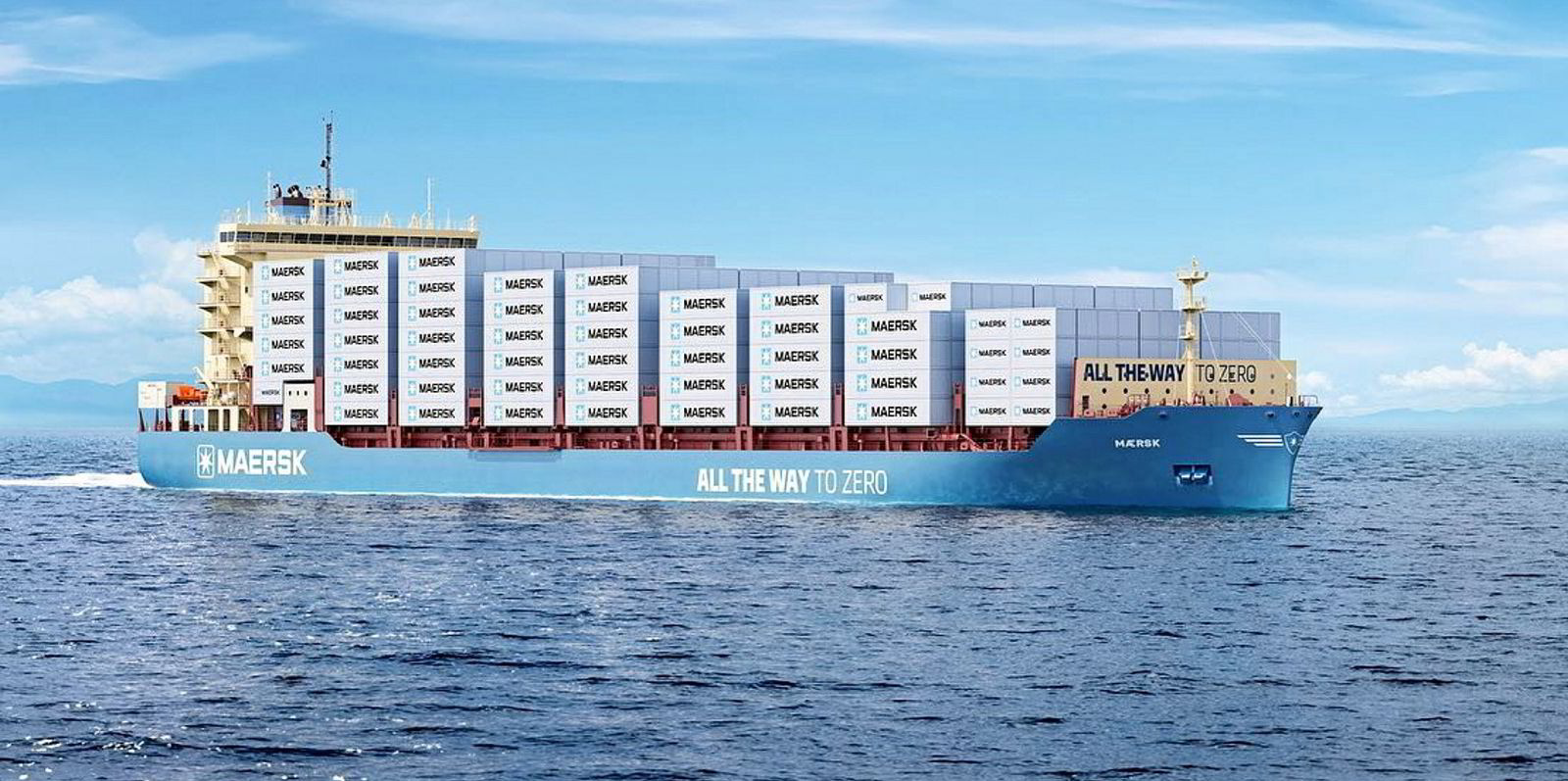French liner giant CMA CGM has selected LNG dual fuelling for its latest batch of 10 ultra-large container ships over methanol on orders inked in the last few days at China’s Yangzijiang Shipbuilding.
TradeWinds was initially told the boxship behemoth, which has been a pioneer of alternative fuels, was opting for methanol dual fuel propulsion systems on its next up batch of 24,000-teu container ships.
But it has since emerged that these vessels are to be ordered with LNG dual-fuelled propulsion systems.
These latest batch of 10 firm LNG-fuelled vessels at Yangzijiang are believed to be priced in the region of $240m each.
They are due for delivery from 2026 onwards.
Sources told this publication that CMA CGM, which was the first shipowner to plump for a series of LNG dual-fuelled ultra large container ships in 2017, is sticking with LNG as a fuel for its large sized ships.
But the French shipowner is said to be keen to spread its fuelling choices and is choosing methanol for smaller container ship newbuildings of neopanamax size and below.
CMA CGM has already signed up to 24 methanol dual-fuelled container ship newbuildings.
The liner company is building 12 ships of 13,000-teu at Hyundai Samho Heavy Industries while China’s Jiangnan Shipyard and Dalian Shipbuilding Industry are both building six vessels of similar size.
TradeWinds contacted CMA CGM for confirmation on the latest Yangzijiang orders. A spokesman for the company said: “..the Group does not comment on these elements.”
Battle lines are being drawn up on LNG versus methanol fuelling.
LNG offers owners the chance to cut their CO2 emissions by up to 23% with proponents arguing that the fuel is available now and at scale with the prospect of using bio-LNG as a drop-in fuel to reduce the percentage further.
But LNG dual-fuelling propulsion comes at a high capital expenditure which is acting as a deterrent to some owners, due to the cost of fuel systems and cryogenic bunker tanks.
In contrast, widely available grey methanol produces higher CO2 emissions than very low sulphur fuel oil and the green variety is almost non-existent at present and exceptionally high cost.
Bunker brokers reported that AP Moller-Maersk is paying $2,500 per tonne for its initial amounts of green methanol for its first methanol dual-fuelled feeder ship.
Those promoting LNG as a fuel argue that companies choosing methanol are “green-washing” by cashing in on green finance for their newbuildings, contracted at lower capex while not being able to operate them on the green version of the fuel for several years during which time they will be producing higher emissions.






